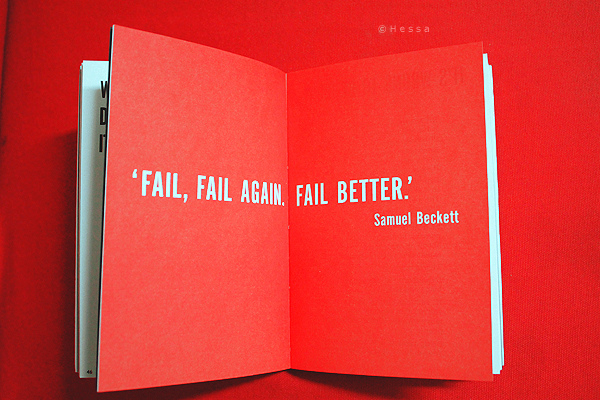
Three tips on learning from failure
Photo credit: Flickr user Hessa.
Grantmakers across the country raised a glass to failure at the 2013 Grantmakers for Effective Organizations conference yesterday. The opening reception, or “Fail Fest,” invited big league grantmakers to help advance philanthropy by sharing hard lessons learned in the field.
President of GEO, Kathleen P. Enright, kicked off the evening by championing lessons learned earlier in her career as a board member for the Fieldstone Alliance. Enright, author of “Funding Effectiveness,” said she experienced warning signs as soon as she took on her role. Soon afterwards Fieldstone’s appointed CEO announced that she was leaving and, shortly thereafter, the foundation discovered that it had accidently dried up all its reserve funds.
“I realize now that I was going through the seven stages of grief,” Enright said. “Once we were able to acknowledge that it had happened, well, then we could do something about it.”
Building on Enright’s example, the ‘Fail Fest’ panelists offered these tips to help leaders in grantmaking cope with failure:
1. Confront it
Associate director for talent management and leadership development of the Annie E. Casey Foundation, Rafael López, said that he inherited failure the day that he was put in charge of a foundation legacy grant. The grantee was notorious, he said, for taking advantage of program silos and falling short of program requirements.
“The issue here is that everyone was talking about it internally and to each other,” Lopez said. “So everyone across the street knew, but no one was telling the grantee.” Lopez said that the grantee was also a former staff member who played important program roles even after leaving the foundation. He stressed that, whatever the circumstances, it’s important to be upfront and make the grantee aware that everyone’s credibility is on the line. “Whatever the grantee relationship, there are consequences to allowing an issue to continue,” Lopez said. “I had to tell them and at first they were upset, but they had to find out.”
2. Be a champion for change and ask the hard questions
Enright said that prior to getting the news that Fieldstone Alliance was in serious financial trouble, she often side-stepped a lot of important questions. Through the experience, she realized it can become dangerous to say: “You know, I’m the new guy, the other folks have been around a long time– they are on top of it and know what’s going on.”
Courtney Bourns, senior program officer at the Henry P. Kendall Foundation, told the audience that when faced with launching effective change management processes within an organization it is critical that all leaders be on board. She explained that in a previous role, she was asked to lead a change management program. Despite her expertise, managerial resistance limited her initiative. “Organizations that say ‘we run a great operation, anyone who doesn’t like it can leave,’ are just setting themselves up for failure,” said Bournes. Bournes said it has been her experience that, when you see your program’s only champions leaving the organization, it may be time to ask some hard questions.
3) Give it time
Michael Maness, who leads Knight’s Journalism and Media Innovation program, previously served as Gannett’s vice president of innovation and design. He highlighted that changemakers within both nonprofit and for-profit organizations face similar obstacles. As an example, Maness explained that he collaborated with a group of “cool kids” to help generate ad revenue for a local newspaper by using human-centered design. The concept focused on enticing retailers to offer incentives for guaranteed sales; it was similar to Groupon, but originated months before Groupon. In the end; however, the publisher killed it. “He said, ‘if this works people won’t advertise with us’” Maness explained. “He made the right decision, really, because he is judged on how much ad revenue he’s bringing in. It’s not his job to innovate something or protect it because it’s new.” That’s why, said Maness, it’s important to allow time and space for ideas to incubate and grow. Offering context and information on the practice itself can help to warm up leaders prior to the big pitch. “My own enthusiasm blinded me to the fact that not everyone is on the same path and journey,” Maness said, referencing skeptical external and internal players. “If you want things to happen you have to protect those [ideas and] people and give them an environment where ideas can nurture and grow.”
By Jenna Buehler, executive assistant/communications at Knight Foundation
Related: “4 ways funders can better communicate what they learn” by Elizabeth Miller on KnightBlog.org
Recent Content
-
Journalismarticle ·
-
Journalismarticle ·
-
Journalismarticle ·


